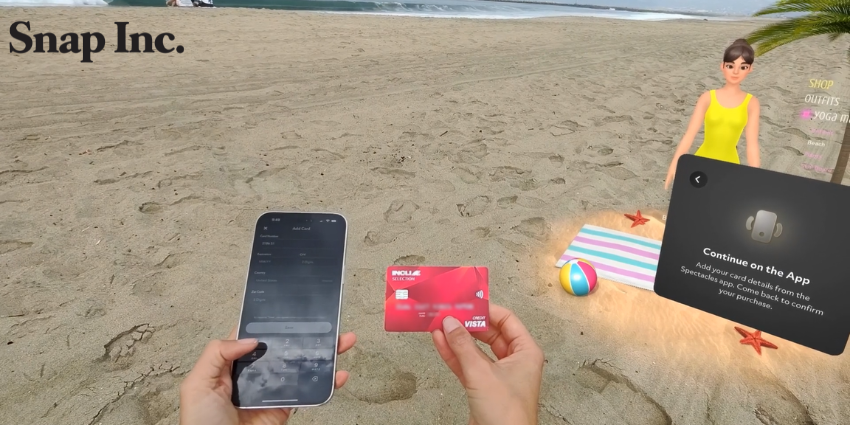It was another busy week for the XR industry. Following the public debut of the Moohan headset, the landscape is buzzing with excitement. This excitement lasted throughout January, kicking off the year with a bang.
From CES to Samsung, the range of XR announcements was truly broad and innovative. The year ahead could be filled with further interest and innovation. It’s early days in 2025, and the space will evolve significantly in the coming months.
Moreover, 2025’s first episode of the Big XR News Show debuted this week, featuring Kevin O Donovan, Co-Chair of the Industrial Metaverse & Digital Twin Committee, VRARA; Jay Latta, Founder and Speaker of The Fusionists; Amy Peck, Founder and CEO of EndeavorXR; and Jennifer Rogers, Executive Officer of the Learning Technology Standards Committee at the IEEE, speaking on some of the month’s biggest stories such as CES 2025 XR highlights, Meta’s quiet discontinuation of the Quest Pro, and NVIDIA’s robotics.
Samsung Unveils More on Moohan
Following the big news of the Samsung XR headset debut last week, further details emerged this week. Notably, Samsung’s focus on AI integration can redefine standards for mixed-reality devices.
The micro-OLED displays feature an impressive resolution of 3,000 DPI, far surpassing the Meta Quest 3’s 1,200 DP—additionally, the Qualcomm Snapdragon XR2+ Gen 2 chipset guarantees smooth performance across various applications.
Samsung Executive VP Kim Ki-hwan explains:
Since the early stages of designing Android XR, we have tried to devise ways to utilise AI in everyday life. Instead of trying to do everything with one device, we wanted to connect XR with smartphones and home appliances so they can more efficiently communicate with the AI assistant.
This vision goes beyond merely standalone XR functionality. Moohan is designed to be a hub for all aspects of your digital life, seamlessly connecting with Samsung’s ecosystem of devices. The Android XR platform enables compatibility with both traditional Android apps and XR-specific applications. Imagine a unified experience that encompasses your entire digital landscape!
Additionally, XR Today reported that in 2022, Samsung made significant investments in dedicated 5G networks in South Korea. These investments support the ongoing development of digital twins, autonomous vehicles, artificial intelligence, and augmented reality hardware, potentially laying the groundwork for Moohan.
Splashtop Releases AR Virtual Support System
Splashtop has recently launched an augmented reality remote support system designed to work with RealWear Smart Glasses. Announced on January 28, 2025, this innovative solution aims to enhance safety in hazardous work environments.
With a strong market presence, Splashtop serves over 30 million users and 250,000 businesses, including 85% of Fortune 500 companies. The company claims that its solution can improve safety by up to 70% in oil and gas environments, a crucial benefit for workplaces dealing with hazards.
The platform directly addresses OSHA compliance by simplifying hazard identification—users can look at and speak to the assistant for guidance. Training is transformed into an experience that feels like having an expert by your side, ensuring that even challenging confined space operations benefit from a virtual safety net of remote supervision.
Virtualware Gains Industry Praise for Revolutionizing Spanish Rail Worker Training
This week, XR Today highlighted a success story with Virtualware; since 2016, virtual reality has enhanced ADIF’s classroom training for Spanish rail workers with promising results.
ADIF collaborated with Virtualware to develop a VR railway simulation solution. This solution, powered by Virtualware’s enterprise XR platform VIROO, takes a holistic and systematic approach, focusing on the entire training lifecycle. It provides tailored and interactive experiences for technical and operational tasks, paving the way for the next generation of railway training.
The Railway Infrastructure Training Simulator (RITS) encompasses various software and hardware components that cover the entire training process, from creating virtual reality training modules to their implementation by students and the subsequent evaluation by instructors.
The VR simulation platform includes multiple components designed to meet the needs of different user profiles, including provider entities, instructors, and other stakeholders. The process begins with provider entities creating content that instructors can integrate into exercises for engaging student experiences.
Central to this process is the Content Builder, a robust tool that facilitates the creation and editing of training modules. It also generates the Virtual Railway World, a realistic 3D operational environment that reflects a real railway system’s physical, logical, and procedural system.
RITS will be showcased at the 7th World Congress on Railway Training in April 2025, highlighting its global impact and potential to transform railway education.







